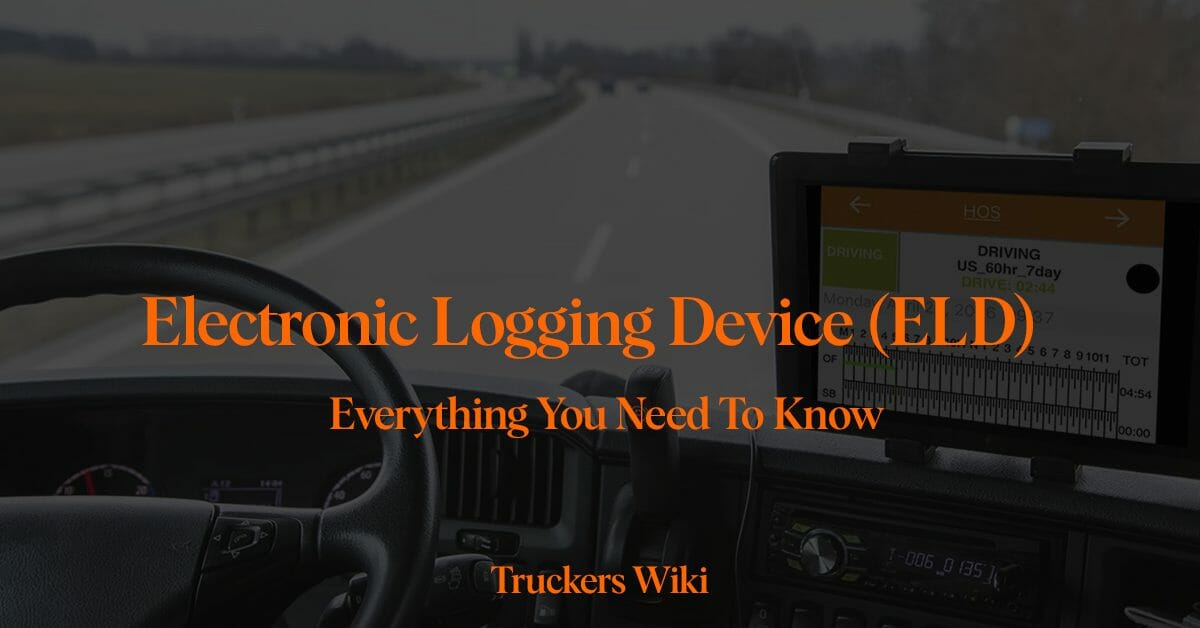
Table of Contents
What is Electronic Logging Device (ELD) and How It Works?
ELD is an electronic system designed to automatically record a driver’s hours-of-service (HOS) and record of duty status (RODS), ensuring compliance with regulations set by transportation authorities, such as the FMCSA. These devices monitor a driver’s work hours, vehicle information, and location data to help ensure that drivers adhere to rules designed to prevent driver fatigue and promote road safety.
Electronic Logging Devices (ELDs) come with various features to help drivers and fleet managers monitor and manage hours-of-service (HOS) compliance, vehicle performance, and other aspects of transportation operations.
Learn about ELD Examptions here.
Here’s a list of common ELD features:
Automatic recording of driving time and status
ELDs automatically capture driving time, distance, and engine hours, providing accurate records of a driver’s on-duty, off-duty, and driving status.
ELD Status
Off-Duty (OFF)
The driver is not working and is free from all responsibilities related to work. This time is considered rest time and can be used by the driver for personal activities. Off-duty time can also reset the driver’s available hours, depending on how long they remain off-duty consecutively.
Sleeper Berth (SB)
The driver is resting in the sleeper berth compartment of the truck. To be considered valid rest time under HOS regulations, the driver must remain in the sleeper berth for specific periods, depending on the split-sleeper berth provision they are following.
Driving (D)
The driver is actively driving the truck. There are limits to how long a driver can be in this status before they must take a break. This status is of paramount importance as it directly affects the driver’s available driving hours for the day.
On-Duty Not Driving (ON or ODND)
The driver is working but not driving the truck. This status can include times when the driver is fueling the vehicle, inspecting the truck, waiting at a shipper or receiver, doing paperwork, or any other work-related activity where the driver is not resting.
There are also exceptions and special provisions within the HOS rules, like the:
- Short-haul exception: which allows certain drivers to bypass the ELD mandate if they meet specific criteria related to their working radius and hours.
- Adverse driving conditions exception: which provides extra driving time if unexpected adverse conditions slow the driver down.
- 30-minute break rule: which mandates that drivers take a break after 8 cumulative hours of driving.
GPS Tracking
ELDs are equipped with GPS functionality to track a vehicle’s location in real-time. This helps fleet managers monitor their vehicles, optimize routes, and improve overall efficiency.
HOS Compliance Alerts
ELDs often provide alerts and notifications to drivers and fleet managers regarding potential HOS violations, ensuring they can take corrective action in a timely manner.
Learn more about HOS here.
Learn about Adverse Driving Conditions here.
ELD Malfunction – What To Do
When ELD malfunctions, drivers are required to notify their carrier within 24 hours and manually record their hours of service using paper logs or a backup method for a period not exceeding 8 days, while the carrier must take steps to fix or replace the ELD to ensure compliance with federal regulations.
Real-Time Diagnostics
ELDs can monitor vehicle performance and generate real-time diagnostic reports, making it easier for fleet managers to identify maintenance issues and schedule repairs.
Driver Identification
ELDs often include features for drivers to sign in and out of the device, ensuring accurate records of who was operating the vehicle at any given time.
Edit and Annotation Capabilities
Drivers can make annotations or edits to their logs in case of errors or special circumstances. However, ELDs are designed to prevent tampering, and any edits are recorded and require an explanation.
Data Transfer and Storage
ELDs are required to have the capability to transfer data to enforcement officers during inspections, typically via wireless web services, email, or a USB drive. Additionally, ELDs store the data securely for a specified period, usually six months or more.
Compliance Reporting
ELDs can generate compliance reports for drivers and fleet managers, making it easier to review and audit HOS records.
Learn more about Compliance here.
Integration with other systems
Many ELDs can be integrated with other fleet management systems, such as transportation management systems (TMS) and dispatch systems, to streamline operations and improve efficiency.
User-friendly interface
ELDs typically come with a user-friendly interface, often featuring a touchscreen, to make it easy for drivers to navigate the system and manage their logs.
Mobile device compatibility
Some ELDs are designed to work with smartphones or tablets, allowing drivers to use their personal devices in conjunction with the ELD system.
Customizable alerts and notifications
ELDs can be configured to send customizable alerts and notifications to drivers and fleet managers, such as idling alerts, speeding alerts, or maintenance reminders.
These features vary among different ELD manufacturers and models, but they all aim to improve HOS compliance, streamline operations, and enhance safety and efficiency within the transportation industry.
Check out common CMV violations here.
External Links
Rios Auto Transporation has a very nice YouTube video on how to use ELD you can check it out here.

